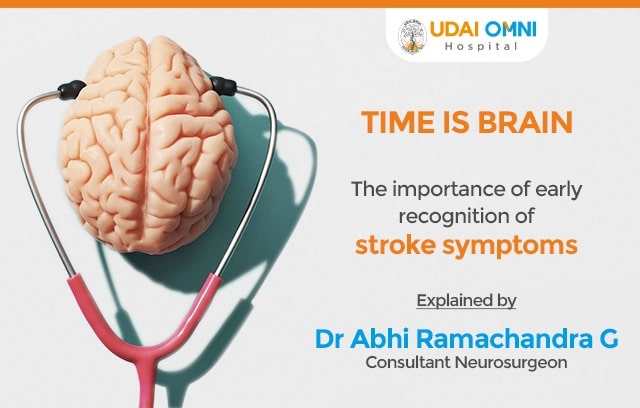Time is Brain
Stroke is the fourth leading cause of mortality in the world.
It can be ischemic or hemorrhagic. Ischemic strokes are more common and account for 75% of strokes whereas hemorrhagic strokes stand at 15%.
Etiopathogenesis:
In adults, embolism is the cause of approximately 75% of all ischemic strokes. The causes of embolism can be categorized into cardioembolic and atherosclerotic – a disease of the vessels of the neck or small vessels of the brain, paradoxical, and cryptogenic.
Hypertension, hyperlipidemia, and diabetes mellitus promote atherosclerosis and independently increase the risk of ischemic stroke. Smoking independently almost doubles the risk of ischemic stroke. Less common causes of ischemic stroke include arterial dissection, vasculitides, arterial vasospasm, prothrombotic states, and global hypoperfusion resulting from shock.
The combination of cytotoxic death with disruption of interneuronal signalling, along with a breakdown of the blood-brain barrier, results in irreversible cerebral injury, termed stroke.
During the progression of ischemia toward infarction, there exists a window of time during which the neurological deficits are reversible if cerebral blood flow is restored.
Hemorrhagic stroke is caused by the rupture of an intracranial blood vessel. The most common cause of intraparenchymal haemorrhage is thought to be chronic hypertension, so much so that it is commonly referred to as “hypertensive” haemorrhage.
Timely Patient Evaluation:
Because of the short therapeutic “window”, all patients with acute focal neurological deficits must be assessed immediately. The initial evaluation should proceed with immediate stabilization of the airway, breathing, and circulation. Neurological deficits should then be assessed, and the presence of possible comorbid conditions and stroke risk factors should be determined through focused patient history.
The National Institutes of Health Stroke Scale (NIHSS)
NIHSS is a validated, reliable standardized test that ensures that the important parts of the neurological examination are performed and that the neurological status of the patient is accurately assessed. It also helps to identify candidates for various interventions.
CT Brain plain imaging is usually the first imaging modality to be done but diffusion-weighted imaging (DWI) MRI is the best imaging modality if readily available.
Reperfusion:
Intravenous thrombolytic (r-tPA) is indicated in patients with mild and moderate NIHSS who presents within a window period of 4.5 hours. ECASS and ATLANTIS trials failed to prove the efficacy of r-tPA after 4.5 hours. Severe NIHSS patients will progress to surgical treatment.
Endovascular Therapy for Stroke:
Intraarterial thrombolysis and mechanical thrombectomy are the options tailored for certain patients.
Surgical management:
DECIMAL, HAMLET, DESTINY trials encourage Prophylactic Decompressive craniectomy for large vessel stroke involving 50% of the territory, NIHSS score more than 18 and stroke volume more than 145ml calculated on imaging. Recently, Extracranial to intracranial bypass techniques are emerging.
For hemorrhagic strokes, several minimally invasive options like Endoscopic evacuation of the clot to stereotactic CT guided aspiration of the clot are available.
Conclusion:
The paradigm that TIME IS BRAIN emphasises the effort to reduce the time for symptom recognition, patient transport, and neurological evaluation so that potentially life-saving treatment can be administered.

